Japan
now browsing by tag
Kimono Patterns – Asanoha 麻の葉

Asanoha is one of my favorite kimono patterns. Especially when I see it done in Sashiko 刺し子 (Japanese embroidery) with a crisp white silk thread against an indigo background. Although it is equally beautiful as a subtle under pattern to a yuzen 友禅染 (resist paste dyeing technique) design.
Let’s take a look at this kimono pattern…

The Pattern of Asanoha 麻の葉 represents hemp leaves. It’s a pattern that has been used to decorate Buddhist statues since the Heian period 平安時代 (794 – 1185) .
“Asa” means hemp and “ha” means leaf. The design has 6 diamonds radiating from a center point (Although most hemp leaves have 5-7 leaves). Hemp was a very important plant in Japan as it was the primary fiber used in clothing along with silk until cotton was cultivated in the Sengoku period 戦国時代 (1467 to 1615). Most original yukata 浴衣 (summer kimono) and underclothing were made of hemp or silk.

Hemp grows quickly, does not need much care and is durable so it is often used in young children and baby clothes in the hope that they will grow strong and healthy
This design was particularly popular during the Edo period 江戸時代 (1603-1868), when it was promoted by Iwai Hanshirou 岩井半四郎 (1776-1847)

White Day in Japan

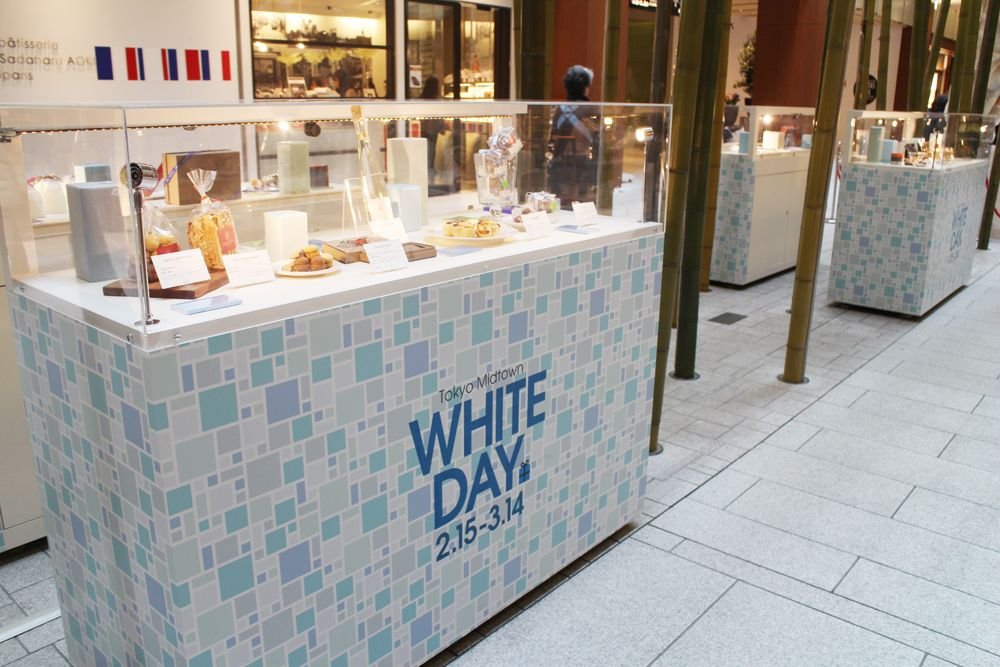
Copyright Japan Today
Japan has had a unique way of celebrating Valentine’s Day since it arrived in the late 1950s. Unlike America where it is a general romantic day for both sexes marked by roses, boxes of heart shaped chocolates and expensive dinners, in Japan it is a day exclusively for women to show their affections for the men in their lives by giving them chocolates.
It does not necessarily have to be romantic in nature, in fact, you are expected to give chocolate to friends and co-workers as well. Referred to as giri-choco (obligation chocolates). Although home made chocolate (honmei choco) and expensive boxes are reserved for your husband, boyfriend or the man whose affection you are seeking.
I have an entire post about Valentine’s Day here.
Today we are talking about a holiday unique to Asia that began in Japan in the late 1970s called White Day. It occurs on March 14th and is for the men to reciprocate to the women in their lives with a gift worth more than what they were given on Valentine’s Day.

Copyright ishimura.co.jp
The generally accepted beginning of the holiday, according to the United States Department of Commerce, starts with confectionary shop Ishimura Manseido (石村萬盛堂) in the Hakata region of Fukuoka.
Founded in 1905, the shop specializes in marshmallows. Especially a product called Tsurunoka, a sweet yellow bean paste filled marshmallow. But for White Day they swapped out the bean paste for chocolate and with the slogan “I would like to take the chocolate I received from you, and wrap it with my white heart” the first “Marshmallow Day” (マシュマロデー) was held in 1977.

Marshmallow Day didn’t catch on however until the National Confectionery Industry Association (全国飴菓子工業協同組合) established it as White Day, an “answer day” or “reply day” to Valentine’s Day in 1978 with the catchphrase “White Day is a sweet day.”
On White Day a man is expected to reciprocate the gifts he was given on Valentine’s Day 3 or 4 fold. Like Valentine’s Day these gifts do not have to be romantic in nature. While they are often a white chocolate or marshmallow gift it can be everything from sweets to clothing and jewelry. A popular gift today is pudding (or purin プリン) bought from famous shops.

https://recipe.monteur.co.jp/
According to Kaori Ishida from The Japan Times “Most women know which shop carries the best pudding and it goes without saying that the packaging must be Instagrammable. Bonus points if the guy got in line to purchase the pudding. Extra bonus points if the guy took a selfie of himself waiting in line, and then sent it to his girlfriend whereupon she can post that on Instagram as evidence of how much he loves her.
This March 14th whether the gift you receive is big or small, Instagrammable or not, today maybe you might buy someone a pudding, white chocolate or even a marshmallow treat for that tiny shop in Fukuoka who started a cultural phenomenon now celebrated throughout Asia and the world.
Sailor Moon 28th Anniversary

March 7th marked the 28th anniversary of Sailor Moon’s debut on Asahi Television. It aired at 7pm on Saturday nights
In honor of the anniversary here are a few pics of Sailor Moon and scouts in kimono!
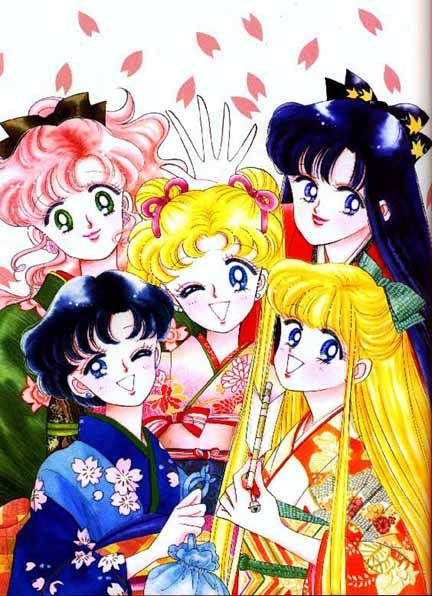



Hina Matsuri/Momo no Sekku


Hina Matsuri snuck up on me this year. There has been so much going on! So I admit this is a bit late!
Hina Matsuri (aka Girl’s Day aka Peach Blossom festival) happens every year on March 3rd.
Peach Blossoms have long been associated with girls because of their pretty and dainty appearance and it is a day for families to celebrate their daughters and wish them healthy, happy and prosperous lives.

Families with little girls begin the preparations for these festivities weeks in advance when Hina Dolls are brought out of storage and placed on display in the middle of February.
Although some families may display only one or two dolls most people are familiar with the elaborate displays of multi-tiered platforms covered in red and gold with a full court of royal dolls dressed in the elaborate kimono of the Heian Era. Accessories can include miniature food, furniture, animals, lamps and very often, peach blossoms.
While these sets are traditionally family heirlooms they can now be bought with a more modern twist to the dolls costumes.

Hina Matsuri dates back over 1000 years and is believed to have originated from the Chinese tradition in which you transferred your misfortunes to the dolls and then released them to the rivers to send the bad luck away. At the time the dolls were made of straw or paper not porcelain.
In some rural areas of Japan, you can still find this custom, called hina-okuri or nagashi-bina, in which people float paper dolls down the rivers.
According to Wikipedia:
“The earliest record of displaying the dolls as part of the Peach Festival comes from 1625, for Emperor Go-Mizunoo’s daughter Oki-ko. Imperial court ladies set up equipment for her to engage in doll play (雛遊び, hina asobi). After Oki-ko succeeded her father as the Empress Meishō, Hinamatsuri legally became the name of the holiday in 1687.”
Special food and treats are also eaten at this time, dyed in the colors of spring and the peach blossom, which blooms a vivid pink.
The one that is most well known though is Hishi Mochi – a tri-coloured sweet in the colors of the festival. Pink for the peach blossom, white for snow and green for the coming spring. A Hina Ningyo (Hina doll) set will almost always include a representation of this amongst the dolls.

Shirozake a sweet white rice fermented drink representing purity and Hina Arare a crispy Rice snacks also in pink, white and green and dusted with sugar are also popular treats.
The day after the festivities the dolls must be returned to storage or it is believed your daughter will have a delayed marriage. Though some larger hotel and department store displays remain up til the 6th or 7th.
Valentine’s Day in Japan

Let’s talk about Valentine’s Day!
Not the typical American holiday of flowers and chocolates and expensive dinners. We’re talking about the Japanese take on the time honored holiday of love. (Which is as passionately loved and hated there as it is here.)
In Japan, Valentine’s Day is almost exclusively a day for women to give chocolates to male friends, family and colleagues, as well as husbands, boyfriends, and those they hope might become their boyfriends, should they be impressed by the fine chocolates they are being given.
There are actually two types of chocolates given out on Valentine’s Day.
Giri-choco and Honmei-choco.
(A third type of chocolate is a more recent trend and this is Tomo-choco. Tomo means friend in Japanese, and Tomo-choco are for female friends in a woman’s inner circle.)
Giri means “obligatory” and so Giri-choco are often small inexpensive gifts given to colleagues, family and male (non-romantic) friends.
Honmei-choco are the special chocolates that one makes or purchases for a love interest. They are normally either far more expensive than the Giri-choco or a lot more effort has been put in to their making.
In fact the month before Valentine’s Day shops are often filled with the accessories, supplies and gift wrap that you need to make homemade chocolates and give them that special touch.
Men are not expected to reciprocate til the following month on White Day. A holiday started by a Japanese confectionery and mainly to be found in Asia.
Obon and Bon Odori 盆踊り

This past weekend was my first time attending an Obon festival and Bon Odori. Obon is a festival with roots reaching back over 500 years in Japan. It’s celebration is centered on honoring one’s ancestors and takes place in July or August depending on whether the region marks the solar or lunar calendar.
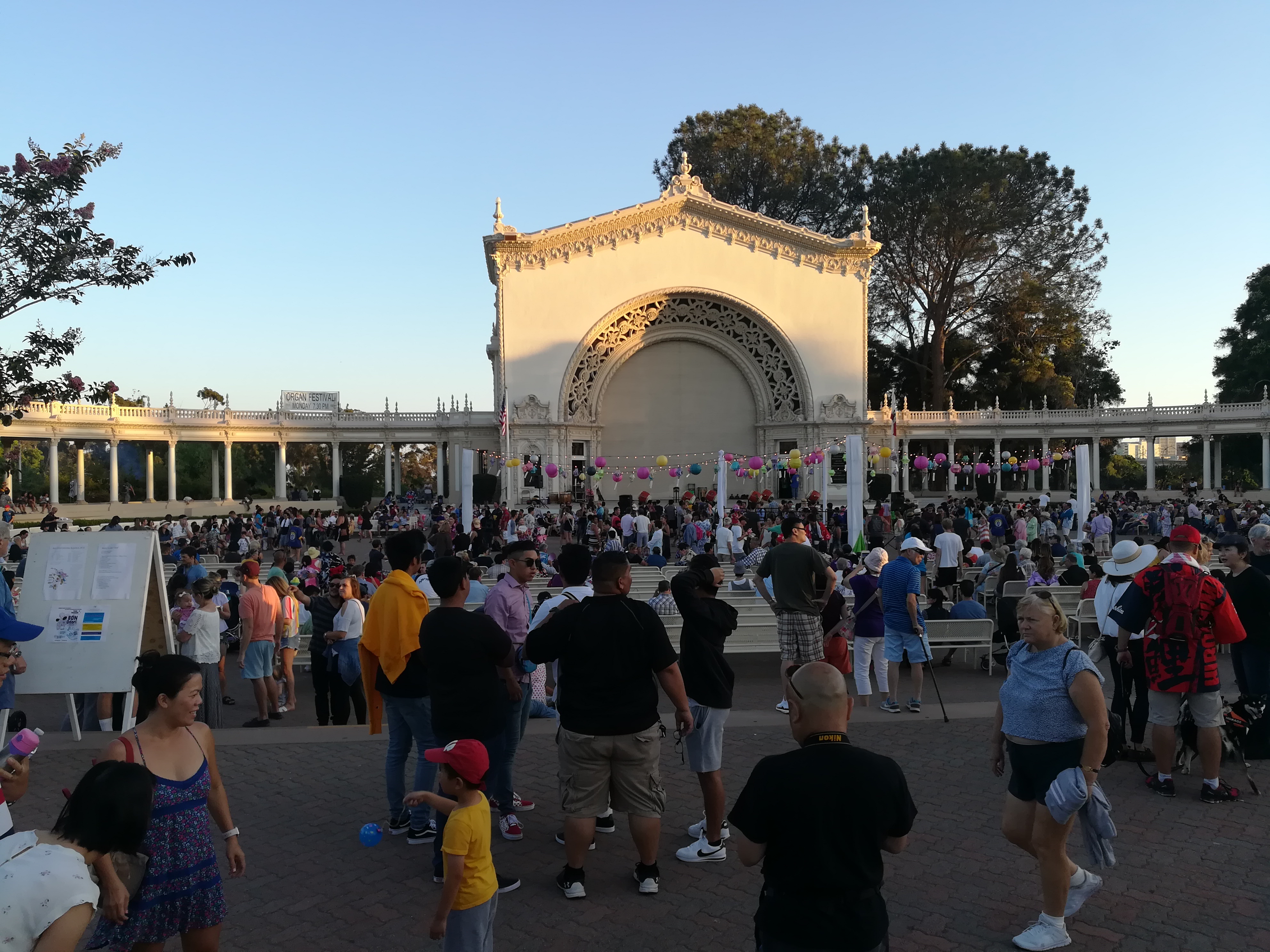
The event was huge in San Diego and took place the weekend of August 6th. Not only did it take over SanKeiEn, the Japanese Friendship Garden there, but also the Organ Pavilion. There were dance presentations and music performances, games, delicious food, vendors of all kinds selling everything from yukata to pottery and antiques, and different societies representing Japanese culture, from the Buddhist Temple to the Shiba Inu club of San Diego.
 My kitsuke class, whose members also make up the San Diego Kimono Club, was participating by hosting the yukata fashion show. Over 20 women participated each wearing a very different yukata and hanhaba obi with a variety of meanings to them. A family heirloom over 80 years old. A yukata made with traditional Okinawan patterns and techniques. A kimono re-purposed into a modern summer dress. Our youngest member, 10 years old, with her heko obi tied into a bright and beautiful bow.
My kitsuke class, whose members also make up the San Diego Kimono Club, was participating by hosting the yukata fashion show. Over 20 women participated each wearing a very different yukata and hanhaba obi with a variety of meanings to them. A family heirloom over 80 years old. A yukata made with traditional Okinawan patterns and techniques. A kimono re-purposed into a modern summer dress. Our youngest member, 10 years old, with her heko obi tied into a bright and beautiful bow.

I was originally only going to come to take video and photos of the event because my yukata had somehow managed to find it’s way in to the dryer and had shrunk to the point I couldn’t wear it (yikes!). About 3 days before Obon I remembered that I not only knew how to sew, but I also knew how to sew a yukata. Taking my love of astronomy and NASA as an inspiration I made myself a yukata out of a cotton material with constellations and planets all over it.
After seeing it and finding out that I had made it myself my instructor and the MC encouraged me to join the fashion show as a last minute addition – which caused a bit of a problem as I had worn tennis shoes and did not have a set of geta handy!!
This was solved by my removing my shoes and walking on the stage in my socks. (Which threw the MC off a bit as she had wanted to talk about how modern and fun a yukata could be when paired with something like tennis shoes!)

The fashion show we create is always meant to show people how much fun wearing kimono is and ends with a dance to “Boogie Wonderland”. I love that we are showing that while beautiful and traditional wearing kimono is also comfortable and enjoyable!


My kimono instructor had her own booth and was selling kimono and dressing people so they could even more enjoy the spirit of the festival. There were so many people in yukata it was wonderful to see!!
To learn more about the tradition of Obon and Bon Odori here are a few links:
https://www.nationalgeographic.com/travel/destinations/asia/japan/summer-obon-festival-of-the-dead/
https://en.wikipedia.org/wiki/Bon_Festivalaq
If you live in the San Diego area and would like to experience renting a kimono to wear for an event or photo shoot please visit my instructor’s page at Kimono Rental Yuko:
Wearing a Juni-Hitoe Kimono (12 layer kimono) in Kyoto

The evolution of the kimono from those long ago designs borrowed from T’ang Dynasty to the modern kimono has been a long and winding path. It continues to meander on even today with new fabrics, new lengths and new decorations such as lace and pockets.
One marker along the way, and a marker that continues to stand out and shine across the ages, is the Juni-Hitoe Kimono – 十二単 – (Juni = 12, Hitoe = an unlined kimono). Perhaps it is the abundance of beautiful art that portrays the courtesans of the day in these sumptuous robes. Perhaps it is the serene beauty of the Hina Matsuri doll displays where the Emperor and the Empress yearly rule over their court. Perhaps it is the echoes of the Lady Murasaki’s timeless Tales of Genji, written when this sort of attire was the everyday dress of the elite.
I once read that a lady of the Heian era was more likely to be criticized for her lack of taste in the colors and patterns of her kimono than her possible numerous love affairs.
When I told her I was going to try one on my kimono instructor told me that that was her next level of training – the Juni-Hitoe. There aren’t many places, even in Japan, where you can get an authentic experience of wearing one of these elaborate ensembles. One of them is the Nishijin Textile Center of Kyoto.
The ladies there, who spoke very little English, were surprised to find out that I was a kimono kitsuke student and seemed very pleased that I could name the different pieces as I was dressed. The hadajuban did not seem to concern them at all except to make sure that it was crossed left over right and that the back was pulled far enough down to not be exposed at the collars of the coming kimono. Other than that it was left very loosely tied on. Which was a surprise to me as my instructor is very particular about how I tie even my hadajuban. Then came padding around my shoulders, chest and waist, a Juban and the Kosode – which truth be told has closer ties to the modern kimono than the Juni-hitoe.
After that they dressed me in what seemed unreasonably long pants similar to hakama called Nagabakama. I couldn’t figure out how a woman would be expected to hold them up under the kimono layers and was very surprised to find that they were folded under my feet to trail behind me. So in essence you are stepping on the pants as you walk. Which would definitely restrict you to a slow shuffle while wearing them!
Then came layer after layer of kimono, one color after the other. The woman folded the long sleeves into an almost triangular shape, had me hold my hand flat and stiff and then through the arms of all the other layers she would slip everything and then let it drop. She obviously knew exactly what she was doing and it took her less time to dress me in the many layers of that kimono than it takes me to dress myself in a modern one!
Besides the pants, another thing took me off guard. The entire ensemble is held together with one tie. A single tie as simple as a long koshihimo!!
As each layer was put on she would tie it. Then the next layer would go on and she would tie that one and then reach under and untie the last layer. When we were done the whole thing dropped off in a single fluid motion right back down to the pants and kosode!
I think everyone interested in Kimono should try to wear one at least once! There is a majesty to this outfit that is not to be found in a kimono of today. In the very physical weight of the robes you can feel the power across the centuries of those noble ladies, but also the sorrow and the weight on their shoulders. To experience it will truly make you think of them in their wood and lacquered castles, hidden behind shoji doors and screens. The restricted ability to walk. All of those layers in a Japanese summer long before the comfort of air conditioning. It makes the modern kimono feel light, airy and mobile by comparison!
If you are interested in wearing a Juni-Hitoe the next time you are in Kyoto you will find all the information that you need at the Nishijin Textile Centere’s official website. A reservation is required, it takes slightly more than an hour, and it costs about $130 USD. With that you will receive one professional photo. (Don’t be afraid to ask if they will take some photos with your cellphone.)
Hello world!

There’s never been a time in my life when Japan wasn’t somehow present. From my mother’s prayer drum and shiromuku doll, that I never had the chance to ask her where she got them from, to my 3rd grade penpal from Shikoku. It all started there and has now grown into a deep love and passion for the culture of the Land of the Rising Sun.
I’ve had a long and lovely meandering path through my studies in Japanese culture. History, ukiyo-e, fashion, kawaii culture, gardens…whatever has struck my fancy I have followed that road to wherever it leads and then followed the next. But it never occurred to me to post about my adventures because the layers of intricacy in the studying of anything from Japan is like trying to pluck all the petals of a Chrysanthemum flower, and I never felt I had fully grasped it to the proper depths of its meaning.
A far wiser man than me once said “The more I learn, the less I realize I know.” True words to live by. But I now am far more confident in what I know vs what I don’t know.
Basically it took a friend pretty much shouting “JUST DO IT!”
So here I am following Richard Branson’s advice to “Screw it, let’s do it.” So I will continue to learn and we will see together where the path leads from here!



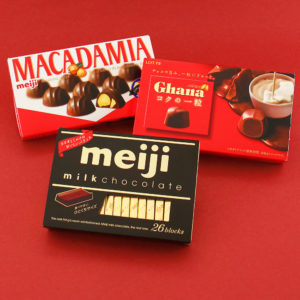







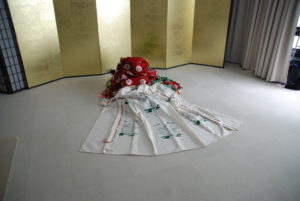

 D5 Creation
D5 Creation